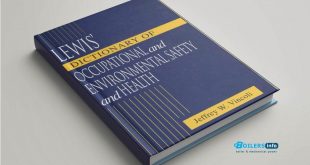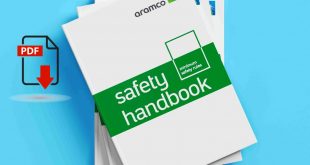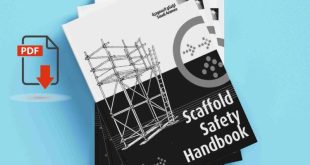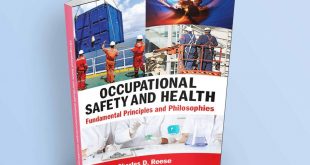
Workplace Safety Questions & Answers article that addresses each of the listed topics in a concise, question-based format. This format is ideal for toolbox talks, safety booklets, or onboarding materials.
Workplace Safety – Questions & Answers
1. What are AEDs and why are they important?
AEDs (Automated External Defibrillators) restore normal heart rhythm during cardiac arrest. Having one onsite can be life-saving in emergencies.
2. How can supervisors lead safety effectively?
By modeling safe behavior, enforcing rules consistently, encouraging reporting, and providing training—supervisors shape safety culture.
3. What should I know about aerial lifts?
Inspect before use, wear a harness, and never exceed weight limits. Only trained workers should operate lifts.
4. Why are aisles and walkways a safety concern?
Cluttered or blocked walkways can cause trips, falls, and hinder emergency egress. Keep them clear and well-lit.
5. What are bloodborne pathogens, and how do I protect myself?
They are infectious materials in blood. Use gloves, eye protection, and follow cleanup protocols after spills.
6. How should compressed gases be handled?
Store upright, secure cylinders, and keep away from heat. Label clearly and inspect for leaks.
7. What’s the danger in confined spaces?
Limited entry/exit and possible toxic atmospheres. Always test air, use permits, and have rescue plans.
8. What are the hazards in power generation and distribution?
Electrical contact, arc flash, and falls. Use PPE, follow lockout/tagout, and stay alert.
9. What’s included in an Emergency Action Plan (EAP)?
Evacuation routes, roles, alarm systems, and procedures for fires, spills, or medical events.
10. Why are emergency eyewashes and showers important?
They flush out harmful substances. Must be accessible, clean, and tested weekly.
11. How does ergonomics reduce injuries?
It matches job tasks to human capabilities, preventing strain, fatigue, and musculoskeletal disorders.
12. What makes a good exit route?
Unobstructed, clearly marked, and wide enough for quick evacuation during emergencies.
13. Are extension cords a hazard?
Yes—overloading, damage, and trip risks. Use only when necessary and inspect before use.
14. When is eye and face protection necessary?
When there’s risk of flying debris, chemicals, or sparks. Select the right type for the task.
15. How does fall protection work?
Guardrails, harnesses, and fall arrest systems prevent injury from working at heights.
16. What is a Fire Prevention Plan (FPP)?
It outlines fire hazards, control measures, and employee responsibilities.
17. What is basic First Aid knowledge?
Assess scene safety, call for help, and treat minor injuries or support until help arrives.
18. What should a first aid kit contain?
Bandages, antiseptics, gloves, scissors, and a first aid guide. Check contents regularly.
19. How should fixed ladders be used?
Ensure secure anchoring, fall protection above 24 feet, and regular inspections.
20. Why are flammable liquids dangerous?
Their vapors can ignite easily. Store in flammable cabinets and away from ignition sources.
21. What is hazard communication (HazCom)?
It ensures workers know about chemical hazards via labels, SDS, and training.
22. What’s required for injury and illness recordkeeping?
Log serious injuries, illnesses, or deaths on OSHA 300 logs within required timelines.
23. What is the role of safety inspections?
They identify hazards before incidents occur. Conduct routinely and document findings.
24. Why is lockout/tagout (LOTO) critical?
It isolates energy during maintenance. Prevents accidental startup and injury.
25. What’s the purpose of machine guarding?
To prevent body contact with moving parts. Guards must be secure and never bypassed.
26. How do I use a portable fire extinguisher?
PASS: Pull the pin, Aim low, Squeeze handle, and Sweep side to side.
27. Are portable ladders safe?
Yes, if used properly: firm placement, correct angle, and three-point contact maintained.
28. What are powered industrial trucks (e.g., forklifts) safety rules?
Operator certification, daily checks, and avoiding rough driving are key.
29. Why is recordkeeping important?
It helps track incidents, compliance, and improve future safety planning.
30. When is respiratory protection needed?
When inhalation risks exist (dust, vapors). Fit-testing and training are mandatory.
31. What are safety considerations for scissor lifts?
Guardrails, proper platform use, and stable surface setup are essential.
32. What does “Safety at Work [pdf]” refer to?
It’s a general guide covering foundational safety practices across industries.
33. Why are spray booths regulated?
They control flammable fumes and overspray. Ventilation and fire controls are essential.
34. What makes stairs a hazard?
Poor lighting, damaged steps, or lack of handrails. Use caution and maintain them.
35. What are storage rack safety practices?
Don’t overload, anchor racks, and inspect for damage regularly.
36. Why is training vital?
It builds competency, prevents accidents, and ensures regulatory compliance.
37. What are OSHA Letters of Interpretation?
They clarify how regulations apply in specific scenarios. They’re useful for legal and operational guidance.
 Boilersinfo Boiler and Mechanical Power Digital Library
Boilersinfo Boiler and Mechanical Power Digital Library





